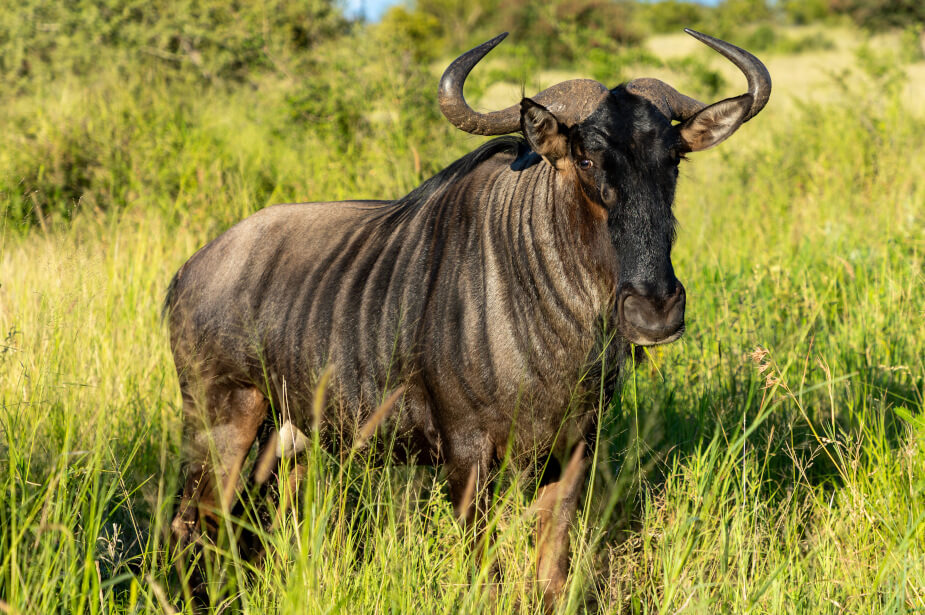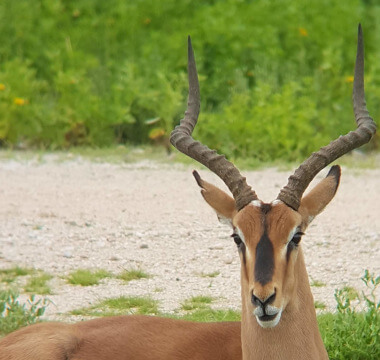Blue Wildebeest hunting in Namibia
Blue Wildebeest hunting in Namibia
A mature trophy is considered to be a bull Blue Wildebeest “past its prime”.
Minimum caliber:
.270 (or equivalent in mm) / 2700 joules
Did you know?
Cattle and wildebeest are not allowed to share the same farmland. The only exception to all other game species is that this combination must be separated by a double game fence to prevent disease. They can however be found in conservancies, where they can roam freely.

Indigenous to Namibia
Historical habitat range in northern and eastern areas of the country
- Strong, rustic stature
- Mature bulls have black or dark hair between the base of the horn and on the forehead
If red or brown hair is visible in front, this is an immature trophy - Older bulls have broader stripes and look slightly darker
- The horns of a bull are much thicker at the base of the horns
- The horns between a cow and a bull differ as follows: In bulls, the horns first slope down a bit and then run upward with a strong sweep. In a cow, on the other hand, the horns are initially more horizontal, followed by a milder upward shaping.
Trophy fees including hunting license:
Between 750 – 1.000 €
+ Raw treatment:
Cleaning, bleaching & pickling: From 40 € per animal or group price from 300€ all-inclusive.
+ Preparation, e.g.:
Shoulder mounting: From 800 €
Skull on board: From 160 €
Skin: From 340 €
+ shipping & handling:
depending on preparation, shipping method and weight
Note: All prices are indicative and vary from supplier and farm to farm depending on population size and demand.
- Bulls often run along in large herds
- They are present throughout Namiba, except in Erongo and Karas
- They are perfectly adapted to savannah areas and grasslands
- Adult wildebeest bulls defend their territory
- There are often groups of gnus with non-dominant bulls on the move
- The best time to hunt a blue wildebeest is at sunrise and sunset During the midday heat wildebeest are resting
- The best chance to hunt a mature bull is during a walk&stalk-hunt

Indigenous & unfenced
Discover all hunting farms with a high free-range population of Blue Wildebeest

Khomas hunting farm #6
✓ perfect for a maximum of two hunters incl. accompanying persons or families
✓ special combination possibility of hunting on the farm area AND exclusive concession areas
✓ accommodation in apartments or fully equipped safari tents

Erongo hunting farm #4
✓ perfect for small groups & families
✓ outstanding cuisine made from ingredients harvested on site
✓ comfortable farmhouse style with pool
✓ great biodiversity in open savannah areas and rugged mountains
Discover which indigenous, free-roaming game species are found in Namibia
This hunting guide will help you make the right decision for your hunting trip. Need more information?














